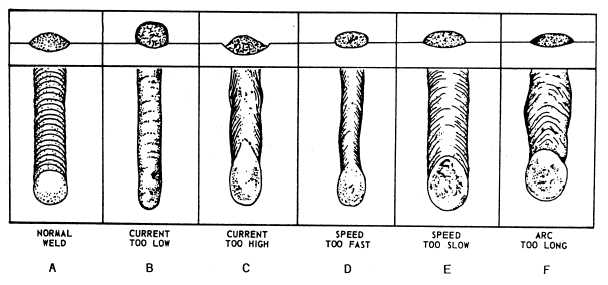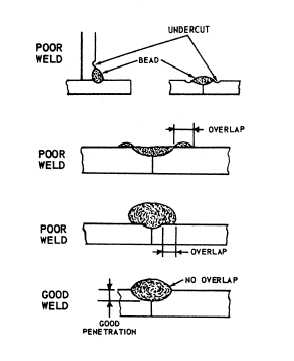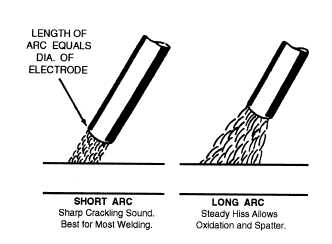
Figure 7-12. - Comparison chart of welds.

Figure 7-13. - Undercuts and overlaps in welding.
Length of Arc When an arc is too long, the metal melts off the electrode in large globules and the arc may break frequently. This produces a wide, spattered, and irregular deposit with insufficient fusion between the base metal and the weld (fig. 7-12, view F).
When an arc is too short, it fails to generate enough heat to melt the base metal properly, causes the electrode

Figure 7-14. - Setting the length of an arc.
to stick frequently to the base metal, and produces uneven deposits with irregular ripples. The recommended length of the arc is equal to the diameter of the bare end of the electrode, as shown in figure 7-14.
The length of the arc depends upon the type of electrode and the type of welding being done; therefore, for smaller diameter electrodes, a shorter arc is neces- sary than for larger electrodes. Remember: the length of the arc should be about equal to the diameter of the bare electrode except when welding in the vertical or over- head position. In either position, a shorter arc is desirable because it gives better control of the molten puddle and prevents atmospherical impurities from entering the weld.
Continue Reading